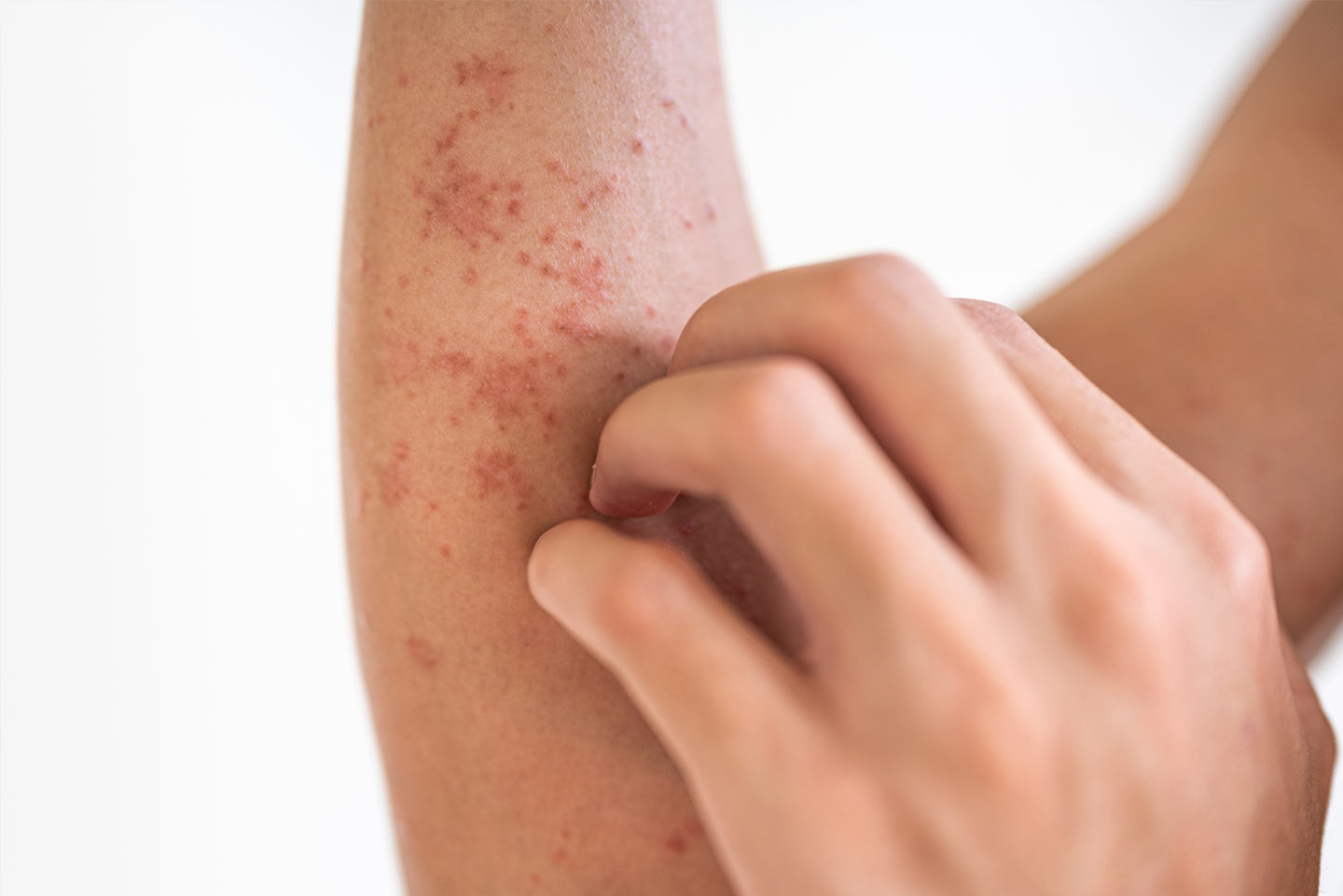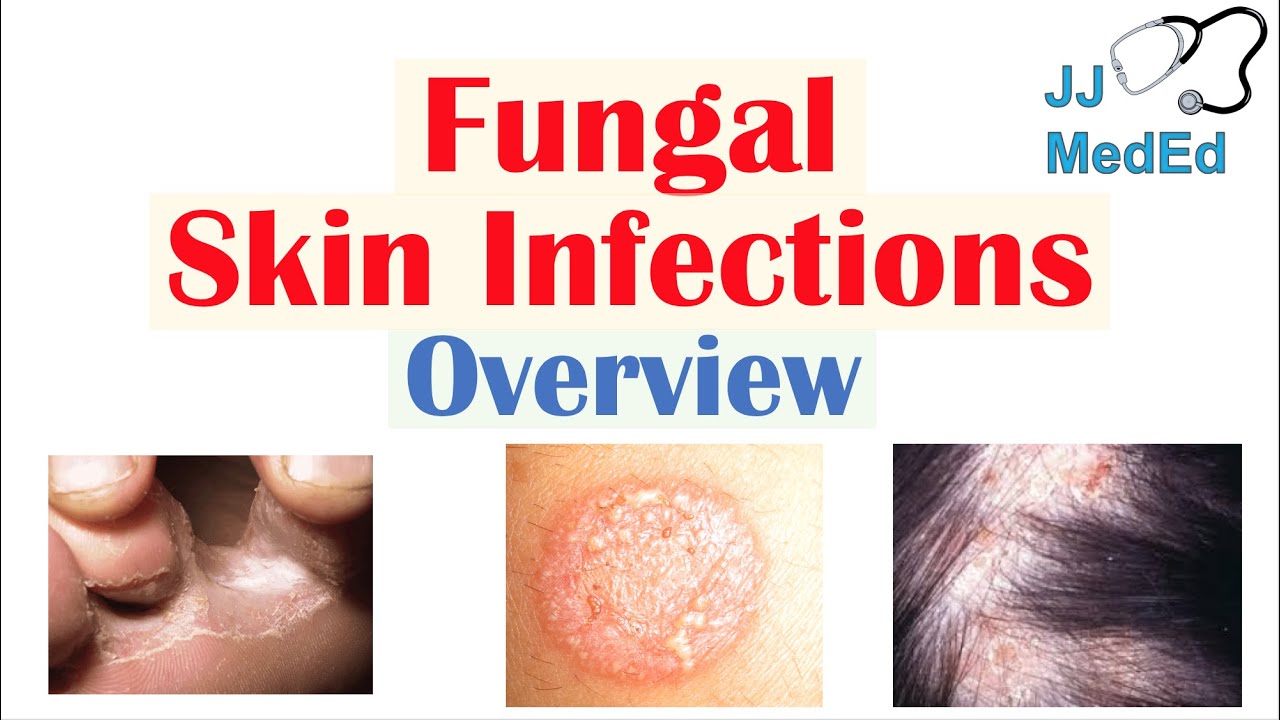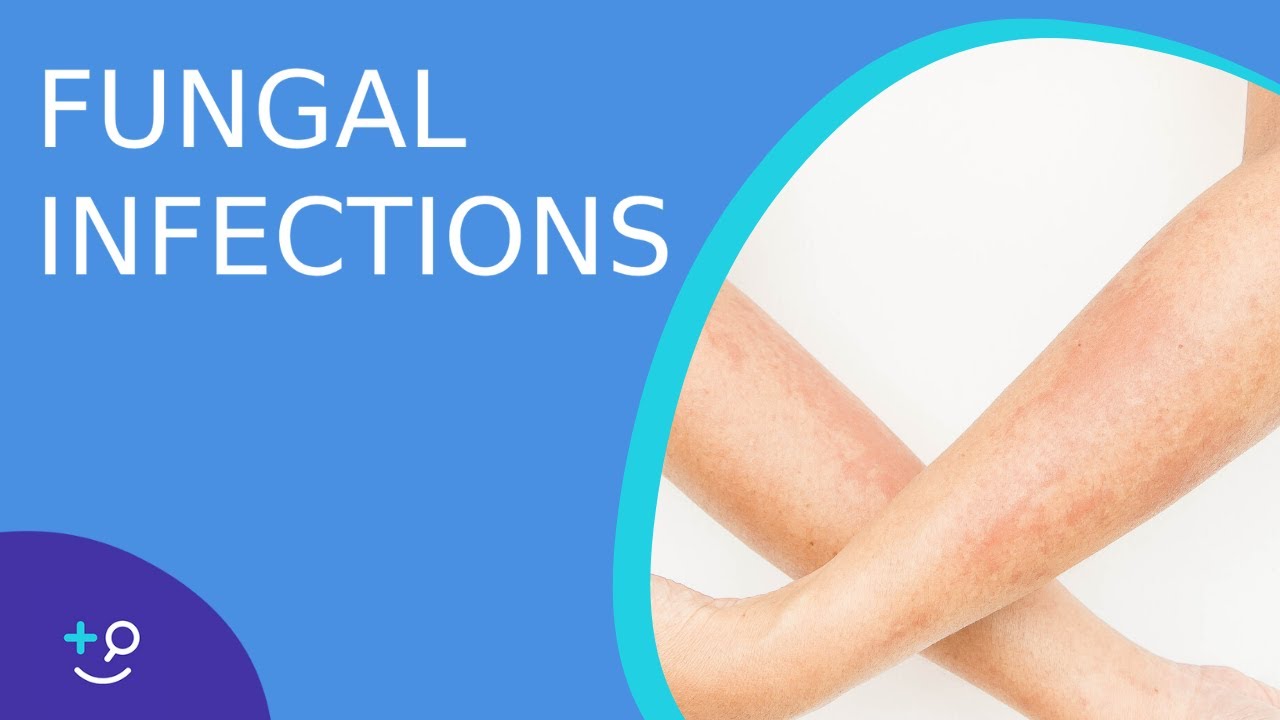Skin Fungus Infection - An Overview Of How It Can Be Treated
Between the toes, in the vaginal area, and under the breasts are common places for skin fungus infection to colonize because of the high moisture content and the proximity of two skin surfaces. These outbreaks are not caused by coming into contact with the diseased area, but rather are an allergic reaction to the fungus.
Author:James PierceReviewer:Karan EmeryJan 23, 20231 Shares194 Views

Between the toes, in the vaginal area, and under the breasts are common places for skin fungus infectionto colonize because of the high moisture content and the proximity of two skin surfaces.
Yeasts like Candida albicans and Malassezia furfur, and dermatophytes like Epidermophyton, Microsporum, and Trichophyton, are the most common causes of fungal skin infections.
Strangely, rashes on uninfected areas of the body might be triggered by fungal infections elsewhere.
An itchy, bumpy rash on the fingers could be the result of a foot fungus infection.
These outbreaks are not caused by coming into contact with the diseased area, but rather are an allergic reaction to the fungus.
An Overview Of Skin Fungus Infection
Molds and fungi can be found just about anywhere. You'll find them in the ground, on your skin, and in plants. Unless they invade your body through a cut or lesion, the microscopic organisms living on your skin usually don't cause any harm.
Fungal skin infections are common in warm, humid locations that don't receive much air circulation since it's just what fungi need to grow and spread. The foot, groin, and other folds of skin are prime examples.
These infections typically manifest as a red, scaly rash that may be irritating. A lot of people get skin diseases caused by fungi. The infection may be bothersome and painful, but it usually isn't dangerous.
Contact between infected people is a common way for the spread of fungal skin infections. Fungal infection can occur by contact with infected fabric, skin, or fur.

Overview of Fungal Skin Infections | Tinea Infections
Common Skin Fungus Infections
The skin is a popular target for a wide variety of fungal diseases. Infections caused by fungi are frequent not just on the skin but also in the mucous membranes.
Yeast infections, such as those found in the vagina and in the mouth (thrush), are one such condition. Below, we'll take a look at the most prevalent skin fungal infections and how they manifest.
Athlete’s Foot
As the name implies, athlete's foot is a fungal illness that manifests itself on the feet, typically in the spaces in between the toes. Athlete's foot is characterized by itching, a burning or stinging feeling between the toes or on the soles of the feet, red, scaly, dry, flaky, cracked, or blistered skin. The infection can spread to other parts of your body in some instances.
Ringworm Of The Scalp
As a result of this fungal infection, both the scalp surface and the hair follicles become infected. Prescription oral medication and antifungal shampoo are usually necessary for treatment, and it primarily affects young children. Scabby or red patches of hair loss, itching and scaling, soreness, and discomfort are all possible symptoms.
Jock Itch
Infected skin in the groin and thigh area is called "jock itch," and it is caused by a fungus. The incidence rate is highest in adult males and teenage boys.
A red, itchy rash that first appears in the groin or upper inner thighs is the most prominent sign of this condition. Rash can spread to the buttocks and stomach, and it often gets worse after exercise or other physical activity.
Scaly, flaking, or cracked skin may also characterize the condition. The rash's border may be slightly elevated and deeper in color.
Ringworm Of The Body
Instead of a worm, a fungus is to blame for ringworm's unpleasant effects. Usually, it affects the trunk and the extremities. Athlete's foot and jock itch are alternative names for ringworm that affects other parts of the body.
Most people with ringworm will notice a circular rash that has slightly elevated margins. Around these rashes, the skin typically seems normal. In addition to being unpleasant, the rash can spread.
The fungus that causes ringworm is responsible for a widespread skin infection. The good news is that antifungal cream generally fixes the problem.
Cutaneous Candidiasis
A fungal infection caused by the fungus Candida. The human body is naturally colonized by this fungus. An infection can occur if it develops too large.
Skin infections caused by Candida thrive in warm, damp, and poorly ventilated environments. The skin folds of the buttocks and the region underneath the breasts are common places for diaper rash to manifest. Small red pustules, itching, and a red rash are all possible signs of a Candida infection of the skin.

FUNGAL SKIN INFECTIONS - EXPLAINED IN 3 MINUTES! RAPID REVIEW
Tinea Versicolor
Tinea versicolor, also known as pityriasis versicolor, is an infection of the skin caused by fungi or yeast that appears as a series of small, oval, discolored patches. An overabundance of the fungus Malassezia, which is found on the skin of nearly 90% of people, is to blame.
The back, chest, and upper arms are the most common areas affected by these discolored spots. They can be any shade from red to pink to tan to brown, and may make your skin look lighter or darker. Flaky, scaly, or itchy patches are possible symptoms.
It's summertime, or in a warm, damp climate, when tinea versicolor is most common. Despite successful therapy, relapses are possible.
Onychomycosis
Nail fungus, often known as onychomycosis, is an unsightly condition. Infections of the toenails are typical, however both the fingernails and toenails can be affected. Nails affected by onychomycosis are discolored (usually yellow, brown, or white), brittle, easily breakable, and thickened. Treatment for this infection typically involves the use of prescription medicines. Your doctor may recommend removing all or part of an infected nail in extreme situations.
Treatment Of Skin Fungus Infection
It is possible to treat fungal infections with antifungal drugs. They can eliminate fungus by suffocating them or by preventing their growth. Antifungal medicines come in a wide range of over-the-counter (OTC) and prescription forms, such as:
- Creams or ointments
- Pills
- Powders
- Sprays
- Shampoos
If you think you have a fungal skin infection, you can try an over-the-counter treatment to see if it heals. If your fungal infection is particularly stubborn or severe, your doctor may prescribe a stronger antifungal medication.
There are several things you can do at home in addition to taking over-the-counter or prescription antifungals to help get rid of the infection. The affected area should be kept clean and dry, and you should wear loose-fitting clothing or shoes to allow the skin to breathe.

Fungal Infections - Causes, Prevention and Cure
People Also Ask
Can Skin Fungus Heal On Its Own?
In most cases, fungal skin infections won't go away on their own and could potentially spread if not treated. It is believed that between 20% and 25% of the global population has a fungal skin infection.
How Do I Get Rid Of Fungus On My Skin?
Antifungal medications are commonly used to treat fungal infections, and topical antifungal medications are often used to treat superficial infections. The term "topical medication" can refer to a wide variety of products, such as creams, gels, lotions, solutions, and shampoos. Oral antifungal medication is another option.
What Causes Fungal Infection In Human Skin?
Fungi that normally inhabit the skin, hair, and nails can sometimes cause fungal diseases. Fungi like candida yeast are included in this category. These yeast can sometimes induce an infection deep into the skin. Yeasts from the genus Candida cause cutaneous candidiasis.
Conclusion
Skin fungus infections are prevalent. Most cases of these infections aren't life-threatening, but the itchy, scaly red skin that results can be annoying. The rash could worsen if not treated.
Many different OTC medications exist to aid in the treatment of fungal skin infections. However, if an infection persists despite treatment with OTC drugs, medical attention is warranted. More effective treatment may require a doctor's prescription.

James Pierce
Author

Karan Emery
Reviewer
Latest Articles
Popular Articles